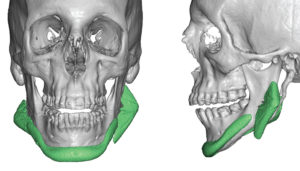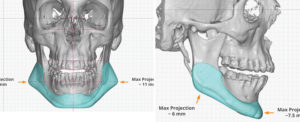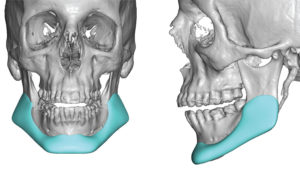Background: A stronger and more defined jawline is a frequent aesthetic facial request for both men and women today. While jawline augmentation used to exclusively refer to the chin (front part of the jaw), today a more comprehensive approach is usually done for an entire lower facial effect from the chin back to the jaw angles.
Augmentation of the jawline can be successfully done by a variety of standard preformed chin and jaw angle implants. With almost ten chin implant and three jaw angle implant styles, there are a large number of possible implant combinations to satisfy most patient’s aesthetic needs. While putting together these various implants for each patient needs is an art form that requires an understanding of their external facial effects, their surgical placement is more straightforward with much less variability.
But what makes jawline augmentation unique is that it requires three implants to achieve a total lower facial effect. As every single implant has its own inherent risks (infection, malposition and undesired aesthetic effect) this makes such risks three times greater for a total jawline augmentation. Such risks are commonly recognized for any other paired or bilateral implants (e.g., cheeks, temples) but no other place on the face (or body) has a three-fold implant complication risk.



A custom jawline implant, besides allowing for chosen dimensions before surgery, lessons the risk of malposition that does naturally exists the using three separated and not connected implants along the jawline.
Highlights:
1) A three piece total jawline implant approach has three times the chance of implant malpositions.
2) A custom jawline implant because it is one single implant has a much lower chance of a malposition problem.
3) Having existing standard implants is an enormous aid in designing a custom jawline implant.
Dr. Barry Eppley
Indianapolis, Indiana



